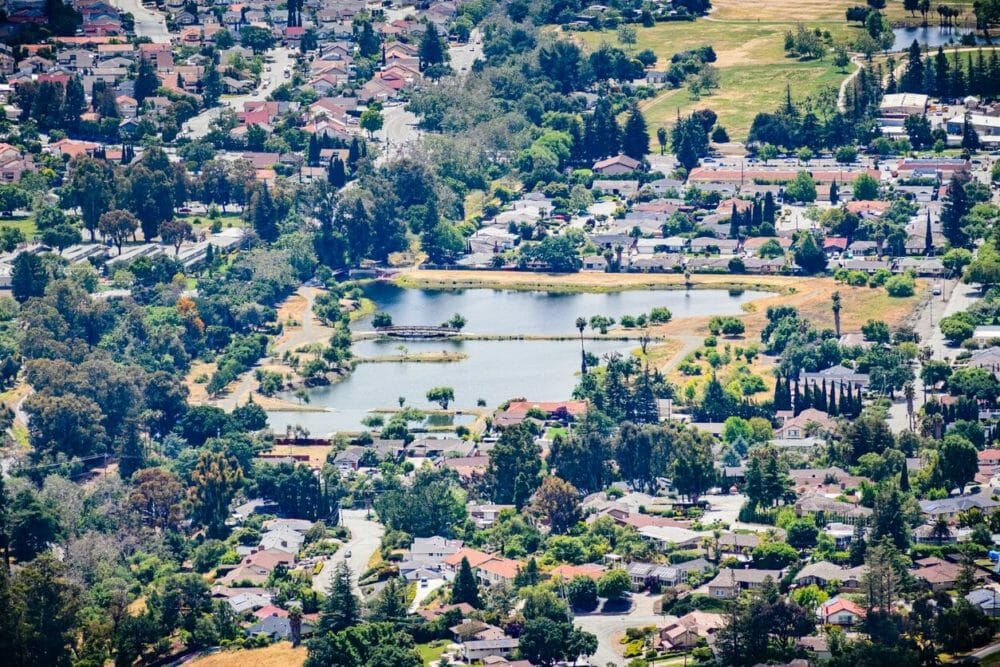Editor’s Note: Sean Hood chairs law firm Fennemore Craig’s largest practice group, business litigation. He is a water lawyer and natural resources attorney. With more than 15 years of experience advising and litigating on behalf of Fortune 500 companies and other businesses, Hood provides counsel on a broad range of business disputes involving water rights, environmental permitting, partnership and shareholder interests, and real estate.
A battle is being waged over water use in California and California’s Central Valley is at the epicenter. Conflict over water supplies for the Central Valley is so notorious that it provides the backdrop for Amazon Prime Video’s popular and fictional Goliath series focused on water theft by billionaire almond growers.
In real life, the Central Valley plays a critical role in California’s and in our country’s food supply. Indeed, the Central Valley has been described as our nation’s greatest food resource. And yet, the water supply needed to support its agriculture is at great risk.
The primary threat to the Central Valley’s water supply is enforcement of California’s Sustainable Groundwater Management Act (SGMA). SGMA was enacted in 2014 to address the overdraft of several groundwater basins in the state. Overdraft means that groundwater pumping exceeds annual aquifer recharge – more groundwater is being extracted each year than is being replaced in the aquifer. SGMA requires that overdrafted groundwater basins be managed so that a sustainable yield is achieved within 20 years.
SGMA is a dramatic shift in California water law. Overlying landowners have long enjoyed the right to extract groundwater for use on their land, and the agricultural, municipal, mining, and industrial sectors rely heavily on groundwater resources to meet their water needs. It is difficult to fathom the collective investment that California businesses have made in reliance on the right to make beneficial use of groundwater.
In an effort to quantify SGMA’s impacts on agriculture, researchers have estimated that achieving sustainable yields will require pumping curtailments of such a magnitude that farmers would be forced to remove up to 780,000 acres of farmland from production. Others estimate that SGMA will require the fallowing of 1 million acres. The Central Valley produces more than half of the fruits, vegetables, and nuts that feed our country, and removing these many acres from production would have significant detrimental impacts on our nation’s food supply.
The economic impacts would be staggering, amounting to several billions of dollars of lost agricultural revenue year in, year out. The economic harm that would be suffered by the related industries, workers, and families is incalculable.
While conservation and other technological efficiencies may be implemented to reduce water use, these measures alone will not offset the water restrictions required by SGMA. The solution to avoiding devastating losses in agricultural production is, of course, new water supplies. It’s that simple, and the federal government is offering such a solution.
The Central Valley Project, one of the nation’s largest federal water conservation projects, has developed a plan to deliver a significant additional supply of water to the Central Valley.
However, California does not embrace this plan to deliver alternative supplies, despite the water crisis looming in the Central Valley.
The Trump administration’s water policy for California is straightforward: to increase the water supplies that are delivered to agricultural users in California’s Central Valley. The administration made this point very clearly in his recently-issued Memorandum on Developing and Delivering More Water Supplies in California.
California’s response to the President’s Memorandum was swift. The day after President Trump issued his Memorandum discussing the Bureau of Reclamation’s decision to deliver additional water supplies to Central Valley farmers, California filed a lawsuit challenging the sufficiency of the underlying endangered species analyses. California’s lawsuit alleges that the Bureau of Reclamation’s decision violates federal environmental laws. California’s core argument is that biological opinions relied upon by the Bureau did not use the best available science in evaluating the potential impacts that releasing additional water to the Central Valley would have on listed fish species (Delta smelt, Chinook salmon, the Central Valley steelhead).
California’s intent is to block the administration’s plan to deliver additional water supplies to the Central Valley.
This fight is one of political ideology. In a press release concerning the lawsuit, California Attorney General, Xavier Becerra, directly called-out “the Trump Administration” for implementing endangered species analyses that Becerra alleges are “scientifically-challenged” and will “push species to extinction.” In that same press release, Governor Gavin Newsom stated his preference for “enforceable voluntary agreements that provide the best immediate protection for species, reliable and safe drinking water, and dependable water sources for our farmers for economic prosperity.” While Newsom purports to recognize the importance of water to support the state’s agriculture, California has yet to propose a solution to the Central Valley’s need for substitute water supplies.
California’s response to the Central Valley Project plan is emblematic of the challenges facing water users throughout California. The state has mandated drastic reductions in groundwater uses, yet, at the same time, California imposes daunting barriers to transitioning to alternative water sources. California routinely challenges projects on federal environmental grounds. For projects that involve decision making by state and local agencies, the extremely broad California Environmental Quality Act (CEQA) bogs projects down in overregulation and vexatious litigation. This means that redirecting surface water supplies to the Central Valley will be very challenging.
The same environmental-permitting challenges inhibit potential desalination pipeline projects. While desalination success stories do exist in California (the most prominent being the Carlsbad Desalination Project), the rareness of inland pipelines in a coastal state with unlimited ocean water exemplifies the regulatory barriers to resolving the water crisis in California’s Central Valley. If California is serious about solving groundwater overdraft without significant disruption to our national food supply, it needs to approach water and environmental regulations in a more pragmatic way. To date, there is no indication that California has any appetite to moderate its regulatory stance.
In light of these outward signals of California’s policy concerning water and environmental regulations, it is fair to wonder: is California willing to solve its water crisis?




